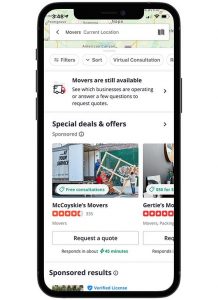Viewability has become the standard within the display advertising industry, so what’s next? Contributor Erik Matlick discusses how audience verification will change the display landscape.

Outsiders often describe the business of MadTech (marketing and advertising technology) as the “Wild West” — and with good reason. The companies in this industry push boundaries to innovate, and as a collective, often push back against attempts to standardize or regulate that innovation. Take viewability as an example.
The drive toward viewability standards was initially met with fear. Reports about fraud and hidden pixels sparked some very uncomfortable conversations between advertisers, agencies and publishers — but they also led to the growth of a new facet of the industry and a market for companies like MOAT and Integral Ad Science.
But knowing that an ad was viewed or clicked on by a human is just the first step in legitimizing the business of audience-based buying and eliminating waste. What’s next is having independent, third-party validation of the audience each campaign was supposed to reach, as well as the dataset behind the targeting.
From viewability tags to target account lists
At a high level, viewability is tracked through tags that provide specific information about whether an ad was visible — down to the number of pixels and where they were on a web page — as well as for how long the ad was in view. Audience verification goes a step further by using tags to validate whether the campaign was actually viewed by the target audience.
For consumer-facing brands, that could mean validating against a cookie pool of in-market auto buyers in a specific metro area, or verifying that a campaign reached a specific subset of users from a retailer’s loyalty list. For enterprise companies and B2B marketers, it ultimately means being able to verify the reach and frequency of campaigns against a list of target accounts or domains.
This notion of validating an audience is especially relevant for B2B because of the growing popularity of Account-Based Marketing (ABM). If a company only sells to enterprise security teams at Fortune 1000 companies, but their ads get served to people that work anywhere else, it’s still waste that viewability tools won’t be able to track. Audience verification picks up where viewability stops.
With audience verification, everybody wins
As a discipline, audience verification may initially create some friction between media buyers and sellers — but just as with viewability, it will be a better value proposition for both sides in the long run.
For advertisers, the benefits are immediate, and audience verification should lead to less waste, which means more budget for the platforms, tactics and campaigns that are effective.
Agencies will also benefit from having some neutral, third-party analysis to help support their media-buying decisions, as well as third-party verification that the data partners they’re working with are providing real value.
For publishers, the benefits may not appear instantly, since, as with viewability, audience verification may initially be a new benchmark or metric for their offerings to be measured against. But audience verification will ultimately funnel more dollars to the media properties and networks that offer third-party proof that they can deliver to the target audiences they promise.
Much like with viewability-based deals, verified or validated publishers will be able to charge more for their audiences, and if there’s a move toward standardization, they can ultimately be “certified” and get added to buyer “safe” lists.
MadTech’s next evolution
Almost every industry with the potential to greatly impact people’s everyday lives has some form of third-party analysis or regulation to help keep things in check. That is, every industry except this wild world of data-driven advertising.
The rise of third-party audience verification (and ultimately, the verification of all the massive datasets we transact against) will perhaps be a sign that while the MadTech frontier is still wild and cutting-edge, it’s becoming a bit more tame and user-friendly.
Some opinions expressed in this article may be those of a guest author and not necessarily Marketing Land. Staff authors are listed here.
Marketing Land – Internet Marketing News, Strategies & Tips
(82)
Report Post







